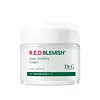What's inside
What's inside
 Key Ingredients
Key Ingredients

 Benefits
Benefits

 Concerns
Concerns

No concerns
 Ingredients Side-by-side
Ingredients Side-by-side

Water
Skin ConditioningGlycerin
HumectantButylene Glycol
HumectantDicaprylyl Ether
EmollientNiacinamide
Smoothing1,2-Hexanediol
Skin ConditioningHydrogenated Polydecene
EmollientPentylene Glycol
Skin ConditioningDicaprylyl Carbonate
EmollientVinyldimethicone
Caprylyl Methicone
Skin ConditioningHydroxyethyl Acrylate/Sodium Acryloyldimethyl Taurate Copolymer
Emulsion StabilisingPanthenol
Skin ConditioningAcrylates/C10-30 Alkyl Acrylate Crosspolymer
Emulsion StabilisingDimethiconol
EmollientPolymethylsilsesquioxane
Tromethamine
BufferingDipotassium Glycyrrhizate
HumectantGlyceryl Acrylate/Acrylic Acid Copolymer
HumectantEthylhexylglycerin
Skin ConditioningXanthan Gum
EmulsifyingCentella Asiatica Leaf Extract
Skin ConditioningFructooligosaccharides
HumectantSodium Phytate
Allantoin
Skin ConditioningLactobacillus Ferment
Skin ConditioningLactobacillus/Soybean Ferment Extract
Skin ConditioningLeuconostoc/Radish Root Ferment Filtrate
AntimicrobialYeast Ferment Extract
Skin ConditioningTocopherol
AntioxidantEpigallocatechin Gallate
AntioxidantMadecassoside
AntioxidantBeta-Glucan
Skin ConditioningCentella Asiatica Extract
CleansingAsiaticoside
AntioxidantMadecassic Acid
Skin ConditioningAsiatic Acid
Skin ConditioningWater, Glycerin, Butylene Glycol, Dicaprylyl Ether, Niacinamide, 1,2-Hexanediol, Hydrogenated Polydecene, Pentylene Glycol, Dicaprylyl Carbonate, Vinyldimethicone, Caprylyl Methicone, Hydroxyethyl Acrylate/Sodium Acryloyldimethyl Taurate Copolymer, Panthenol, Acrylates/C10-30 Alkyl Acrylate Crosspolymer, Dimethiconol, Polymethylsilsesquioxane, Tromethamine, Dipotassium Glycyrrhizate, Glyceryl Acrylate/Acrylic Acid Copolymer, Ethylhexylglycerin, Xanthan Gum, Centella Asiatica Leaf Extract, Fructooligosaccharides, Sodium Phytate, Allantoin, Lactobacillus Ferment, Lactobacillus/Soybean Ferment Extract, Leuconostoc/Radish Root Ferment Filtrate, Yeast Ferment Extract, Tocopherol, Epigallocatechin Gallate, Madecassoside, Beta-Glucan, Centella Asiatica Extract, Asiaticoside, Madecassic Acid, Asiatic Acid
Allantoin
Skin ConditioningPyridoxine Hcl
Skin ConditioningWater
Skin ConditioningButylene Glycol
HumectantCyclopentasiloxane
EmollientPolyoxymethylene Melamine
PEG-7 Glyceryl Cocoate
EmulsifyingDimethicone
EmollientDiglycerin
HumectantPolyglyceryl-3 Isostearate
EmulsifyingTocopherol
AntioxidantGlycolic Acid
BufferingPotassium Ascorbyl Tocopheryl Phosphate
AntioxidantRiboflavin
Cosmetic ColorantSodium Hyaluronate
HumectantAcrylic Acid
Polyvinylalcohol Crosspolymer
Xanthan Gum
EmulsifyingSorbitol
HumectantSodium Hydroxide
BufferingMethylparaben
PreservativeAllantoin, Pyridoxine Hcl, Water, Butylene Glycol, Cyclopentasiloxane, Polyoxymethylene Melamine, PEG-7 Glyceryl Cocoate, Dimethicone, Diglycerin, Polyglyceryl-3 Isostearate, Tocopherol, Glycolic Acid, Potassium Ascorbyl Tocopheryl Phosphate, Riboflavin, Sodium Hyaluronate, Acrylic Acid, Polyvinylalcohol Crosspolymer, Xanthan Gum, Sorbitol, Sodium Hydroxide, Methylparaben
 Reviews
Reviews

Ingredients Explained
These ingredients are found in both products.
Ingredients higher up in an ingredient list are typically present in a larger amount.
Allantoin is a soothing ingredient known for its protective and moisturizingg properties. Because of this, it is often added to products with strong active ingredients.
Studies show higher concentrations of this ingredient can promote wound healing.
Though it can be derived from the comfrey plant, allantoin is produced synthetically for cosmetic products to ensure purity.
Learn more about AllantoinButylene Glycol (or BG) is used within cosmetic products for a few different reasons:
Overall, Butylene Glycol is a safe and well-rounded ingredient that works well with other ingredients.
Though this ingredient works well with most skin types, some people with sensitive skin may experience a reaction such as allergic rashes, closed comedones, or itchiness.
Learn more about Butylene GlycolTocopherol (also known as Vitamin E) is a common antioxidant used to help protect the skin from free-radicals and strengthen the skin barrier. It's also fat soluble - this means our skin is great at absorbing it.
Vitamin E also helps keep your natural skin lipids healthy. Your lipid skin barrier naturally consists of lipids, ceramides, and fatty acids. Vitamin E offers extra protection for your skin’s lipid barrier, keeping your skin healthy and nourished.
Another benefit is a bit of UV protection. Vitamin E helps reduce the damage caused by UVB rays. (It should not replace your sunscreen). Combining it with Vitamin C can decrease sunburned cells and hyperpigmentation after UV exposure.
You might have noticed Vitamin E + C often paired together. This is because it is great at stabilizing Vitamin C. Using the two together helps increase the effectiveness of both ingredients.
There are often claims that Vitamin E can reduce/prevent scarring, but these claims haven't been confirmed by scientific research.
Learn more about TocopherolWater. It's the most common cosmetic ingredient of all. You'll usually see it at the top of ingredient lists, meaning that it makes up the largest part of the product.
So why is it so popular? Water most often acts as a solvent - this means that it helps dissolve other ingredients into the formulation.
You'll also recognize water as that liquid we all need to stay alive. If you see this, drink a glass of water. Stay hydrated!
Learn more about WaterXanthan gum is used as a stabilizer and thickener within cosmetic products. It helps give products a sticky, thick feeling - preventing them from being too runny.
On the technical side of things, xanthan gum is a polysaccharide - a combination consisting of multiple sugar molecules bonded together.
Xanthan gum is a pretty common and great ingredient. It is a natural, non-toxic, non-irritating ingredient that is also commonly used in food products.
Learn more about Xanthan Gum